| |
|
|
| |
History
2019
|
|
| |
|
|
| |
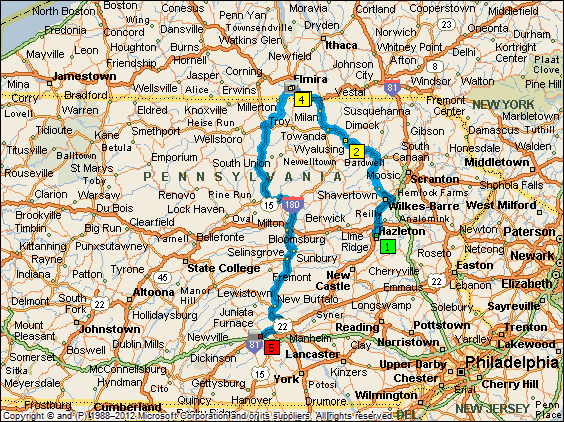 |
|
| |
There are no apparent real
'breakfast' options where we are now, so I tell Sissy and Andy -
"We'll just mosey along
and maybe we'll run across a real deal diner or something along the way."
|
|
| |
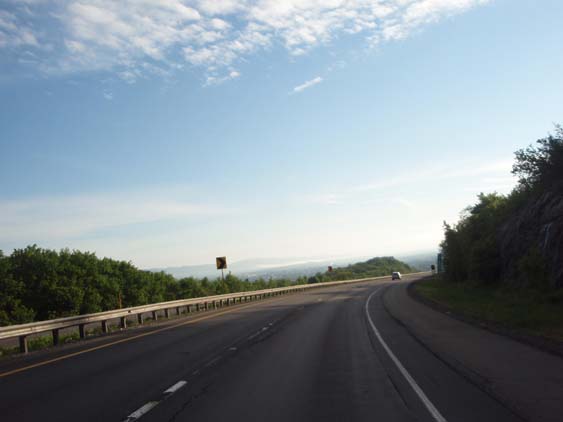 |
|
| |
So we are off like a dirty
shirt but I see no diners along our path. However, I do see a sign for
Bob Evans, so I lead the gang off the highway and down into town. We get
to do several fancy U-turn maneuvers similar to synchronized swimming
as the entrance to the restaurant is not intuitively obvious and the four
lane has a very pronounced concrete divider in the middle of it.
|
|
| |
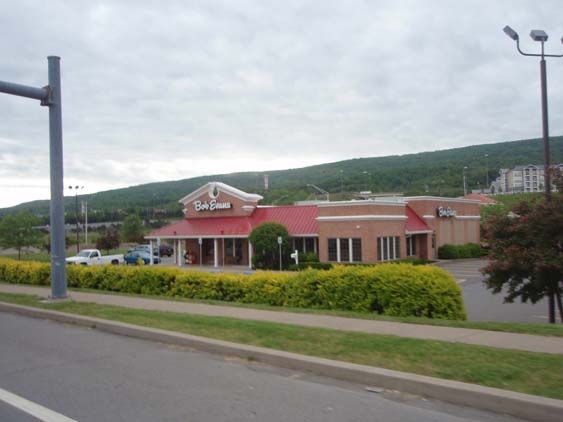 |
|
| |
But once again the
hot chocolate is great ... |
|
| |
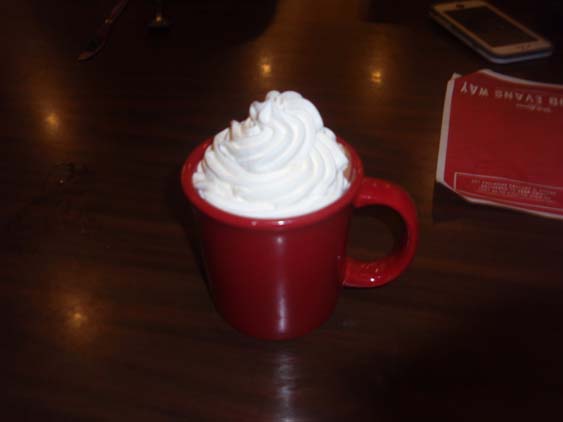 |
|
| |
and
the omelet is good and the breakfast challenge has been met with and dealt
with. |
|
| |
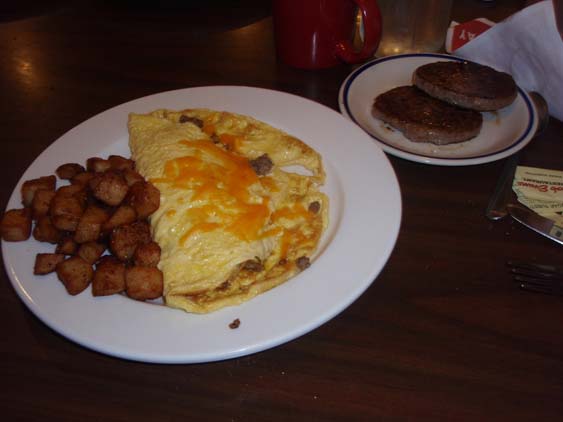 |
|
| |
And
in the wake of the meeting there is nothing left but ashes. |
|
| |
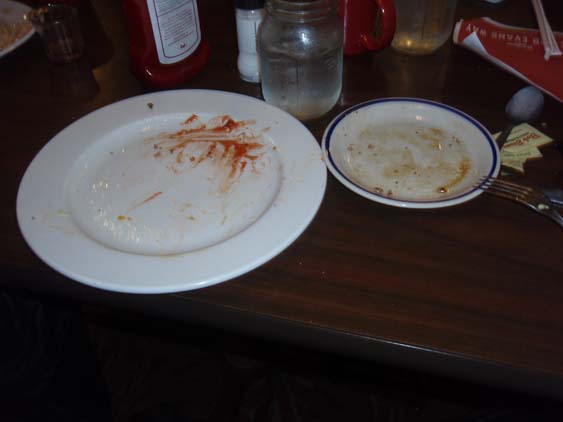 |
|
| |
There will be very
little interstate on the way up to Elmira, and for that we are thankful.
After I was run off the interstate by a careless driver resulting in my
pickup truck being totaled, I like the interstates even less than before.
To me, they are just necessary evils for getting from one place to another
hopefully quickly. |
|
| |
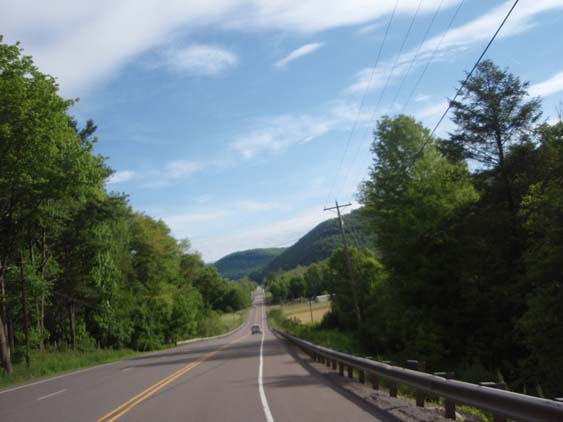 |
|
| |
Most
of the day we will be in the Pennsylvania countryside with it's lovely streams
... |
|
| |
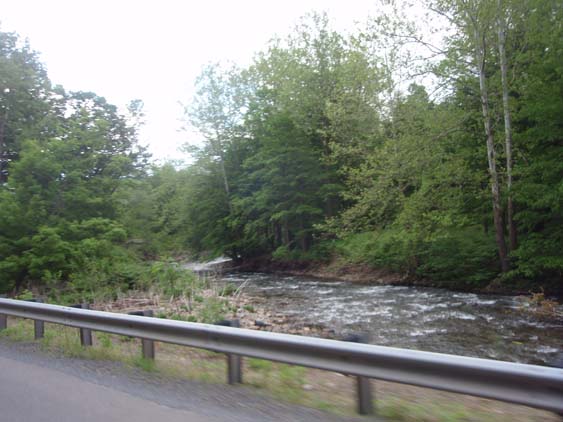 |
|
| |
neat
barns ... |
|
| |
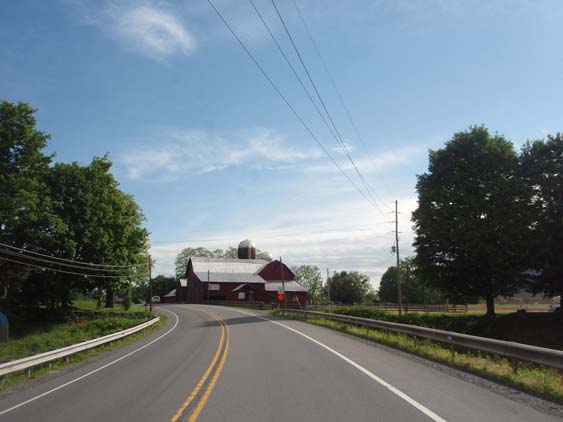 |
|
| |
old,
classic church buildings ... |
|
| |
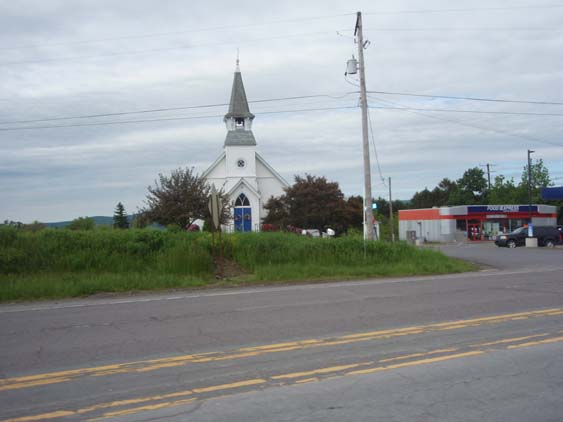 |
|
| |
and
stately old manses. |
|
| |
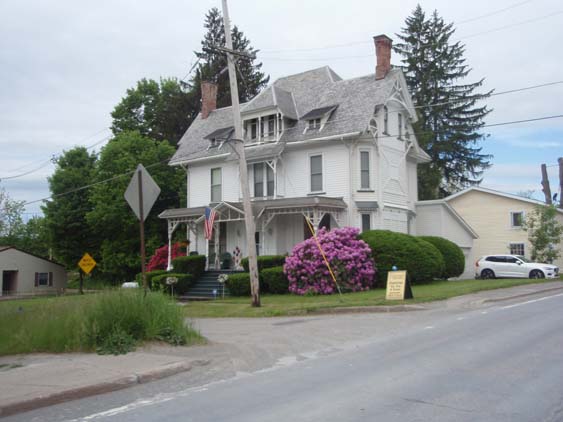 |
|
| |
When
we pass through this town - Wyalusing
- I have to wonder just how you pronounce that. But the original name is
even more confusing - M'chwihilusing. |
|
| |
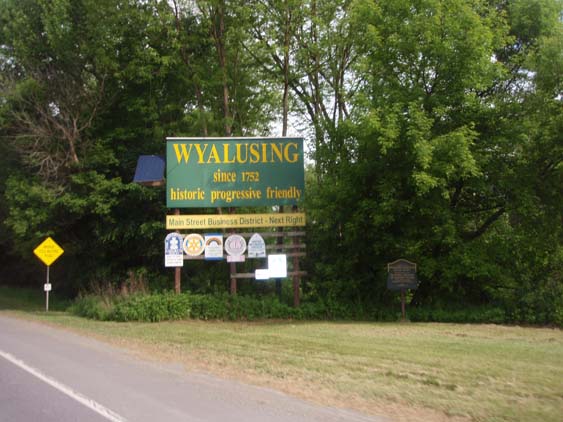 |
|
| |
It's
a typical small town with quiet streets and little traffic this morning. |
|
| |
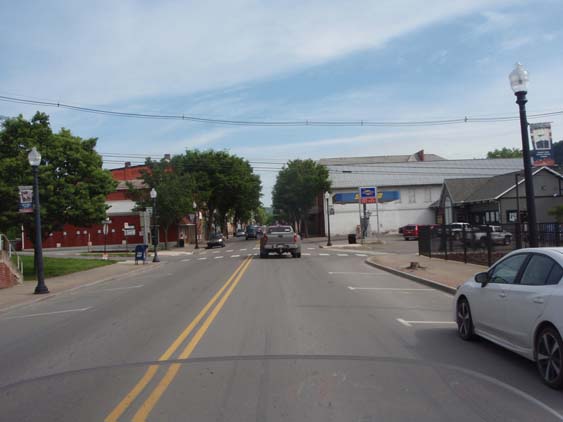 |
|
| |
Along
the way we see more interesting old buildings ... |
|
| |
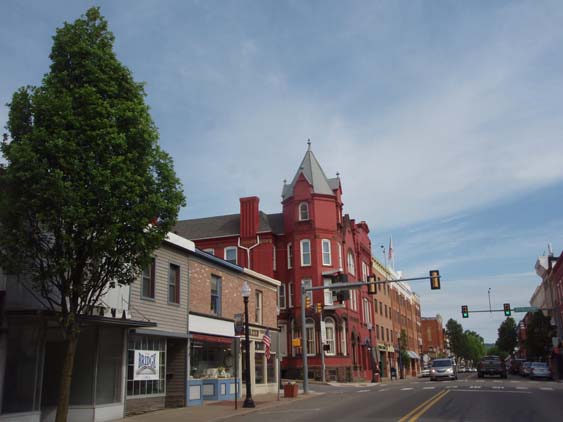 |
|
| |
lovely
quaint houses ... |
|
| |
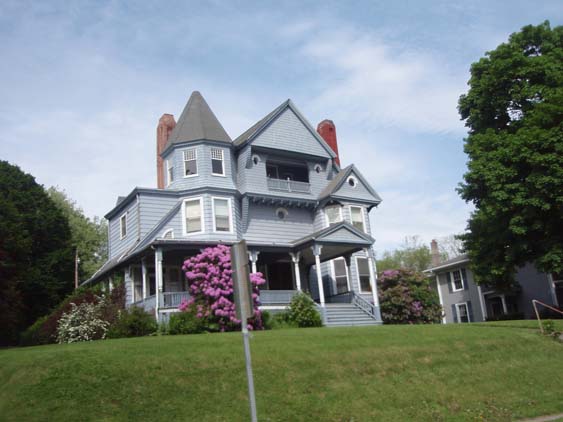 |
|
| |
and
some really neat paint jobs. |
|
| |
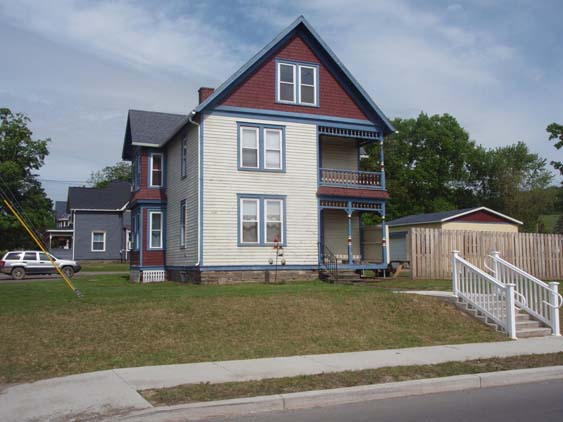 |
|
| |
When
we arrive in Elmira proper, we cannot locate the POW camp site according
to where my GPS places it. We are right at the Chemung Valley History Museum,
so I figure they should know where it is without us doing a bunch of searching. |
|
| |
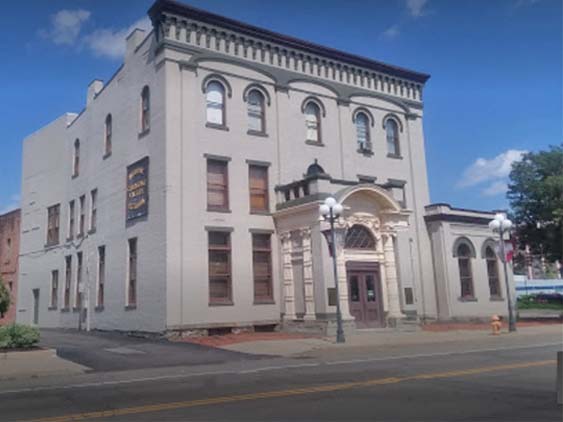 |
|
| |
When I go inside, I see a square
grand piano that is very close to the one that we have in our living room.
The lady inside is very helpful and tells us -
"Oh yes, they just came
by to pick up the keys."
But she cannot find the address
of the place in her files. Fortunately I see a brochure over to the side
about it and it has the address. She gives us quick directions to it now
that she knows where it is and we are off to the next phase of our adventure.
|
|
| |
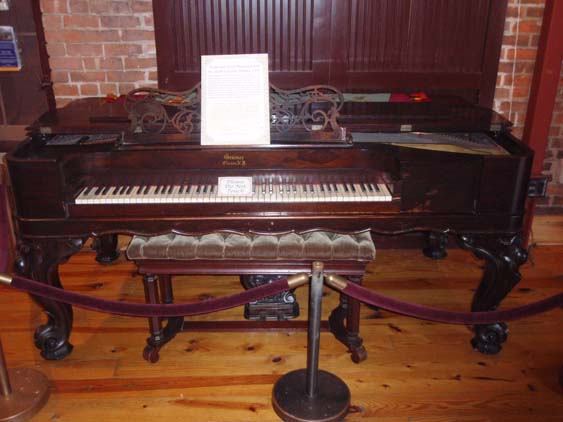 |
|
| |
The
Friends of the Elmira Civil War Prison Camp have worked long and
hard to establish a museum where the original camp was located. It just
so happens that this is the first day that they are open for this season. |
|
| |
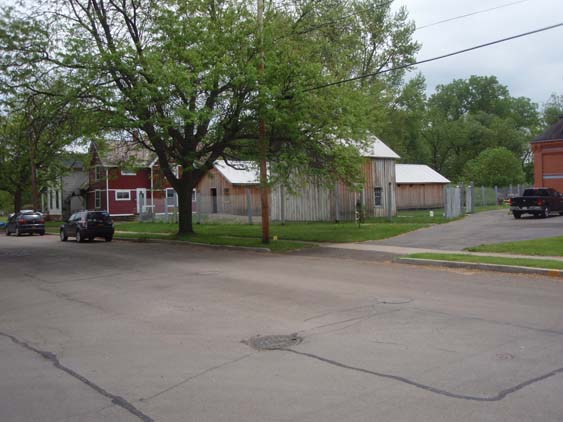 |
|
| |
When we go inside, Doug is
there in a period uniform. I say to him with a grin -
"Well, you're wearing
the wrong uniform!"
He replies "I could go
put on my Confederate one" and we both laugh. He and Miss Terri are
so kind to take us on a walking tour of the area. The first stop is a
memorial about the camp that was only created in recent years.
|
|
| |
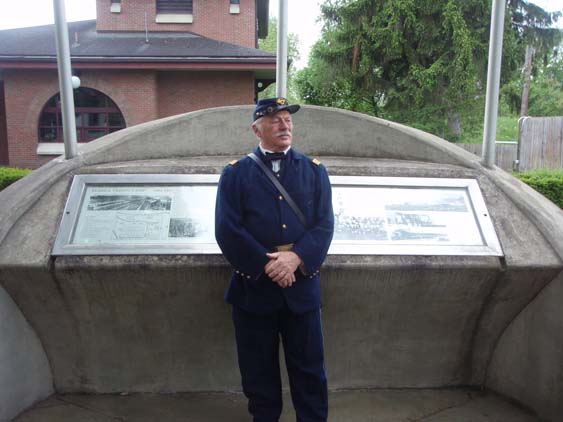 |
|
| |
Sissy
and I pose for our ancestor picture in front of it. |
|
| |
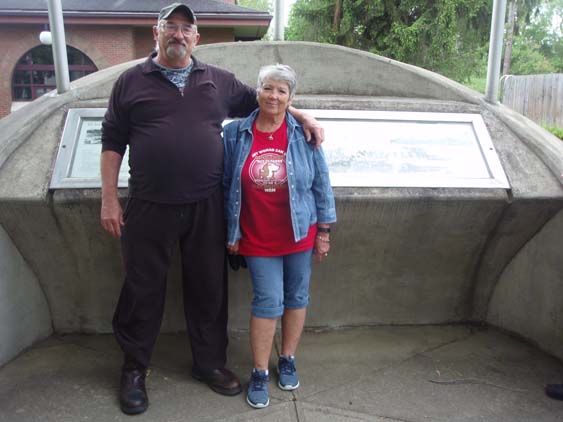 |
|
| |
This
flag stone was only set up in 1992 at the entrance to the camp with one
of the original flag poles from the camp. |
|
| |
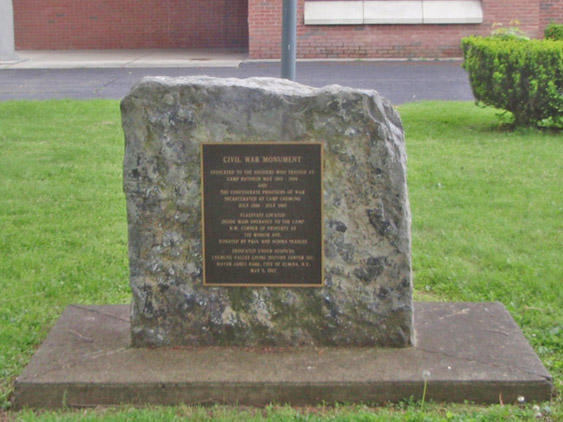 |
|
| |
The
memorial tells the horrors of the place though it was only used as a POW
camp for about a year. During those 12 months, 2,970 of the 12,100 prisoners
died from a combination of malnutrition, continued exposure to harsh winter
weather, and disease from the poor sanitary conditions on Foster's Pond
combined with a lack of medical care. |
|
| |
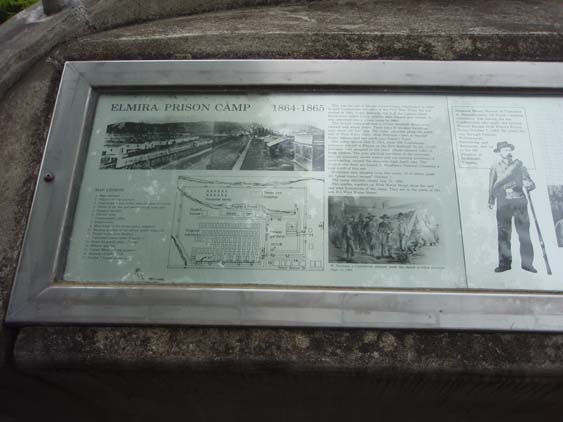 |
|
| |
These
thirty acres were dubbed
'Hellmira' by those prisoners who were incarcerated here. The first
officer put in charge knew the facility could only hold 5,000 or so men
and only feed 1,500 at a time. He was told to prepare for 8,000 to 10,000
men that were coming. Also, there were no medical facilities in the compound
to tend to those that were ill and wounded. |
|
| |
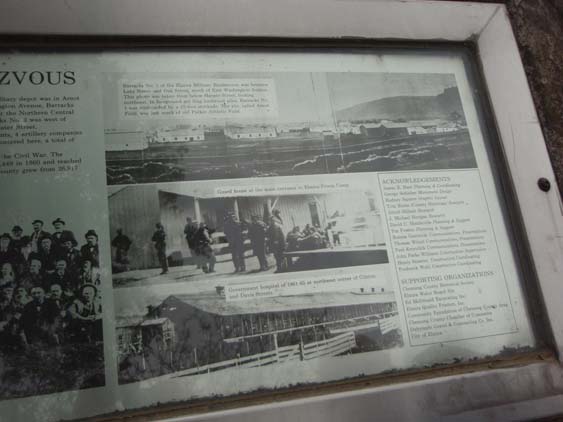 |
|
| |
The
Friends have been able to procure what they believe to be one of the original
buildings from the camp that was located and used as a garage at one of
the local houses. They have also constructed a replica of one of the barracks
and watch towers that were used at the camp. |
|
| |
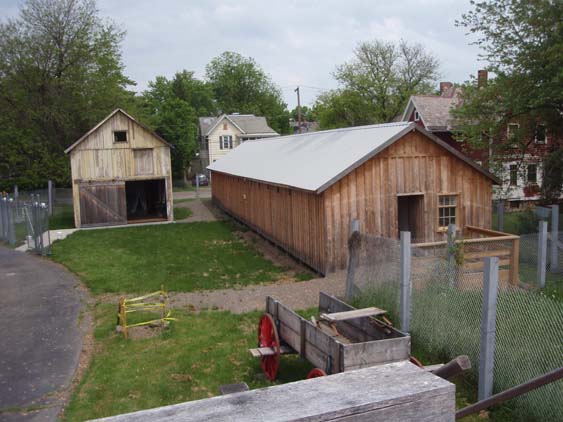 |
|
| |
The
original building was disassembled and the parts marked so it could be moved
and reconstructed as close to it's original state as possible. |
|
| |
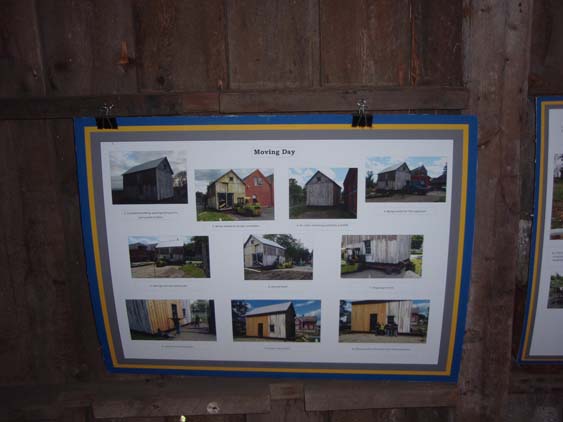 |
|
| |
In the
reassembly, some new timbers had to be added due to the decay of some of
the original wood, but for the most part it is built out of the original
hemlock planks and beams. |
|
| |
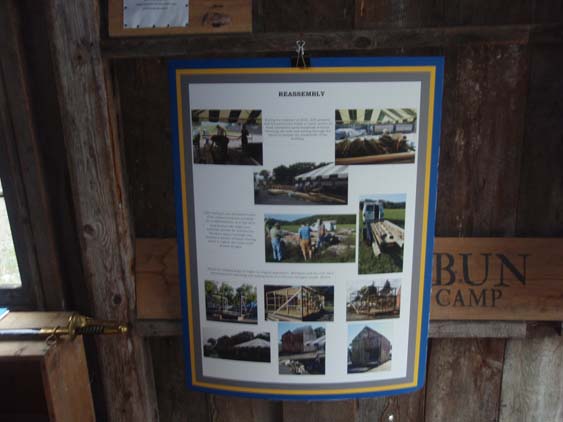 |
|
| |
Inside
is lots of information about the camp and a model of what it looked like
many years ago. |
|
| |
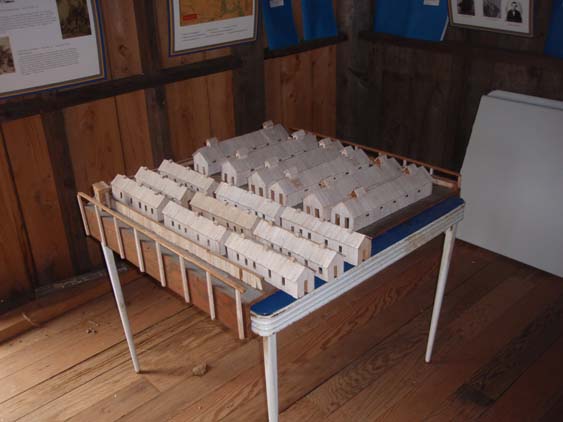 |
|
| |
They
give us a tour of the replica barracks and point out that they had to add
extra roofing supports that the original barracks did not have. With the
winter snows that come, the buildings would collapse from the weight of
the snow. And the original buildings use board and batten for the roof just
like they used on the sides, which was absolutely worthless at keeping out
the water. |
|
| |
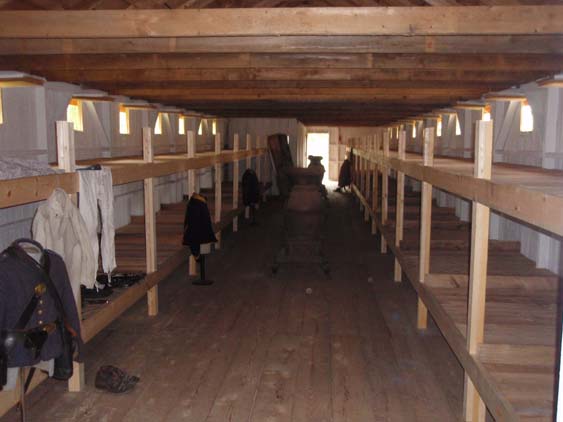 |
|
| |
Each barracks, for those fortunate
to be assigned to a barracks instead of a tent, had two pot belly stoves.
Sissy and I comment how that's the kind of stove we had in the first little
shack we lived in up in the hills of Tennessee. I add -
"It was an old coal stove
and when a fire was going, it always looked just like somebody grinning
at you."
|
|
| |
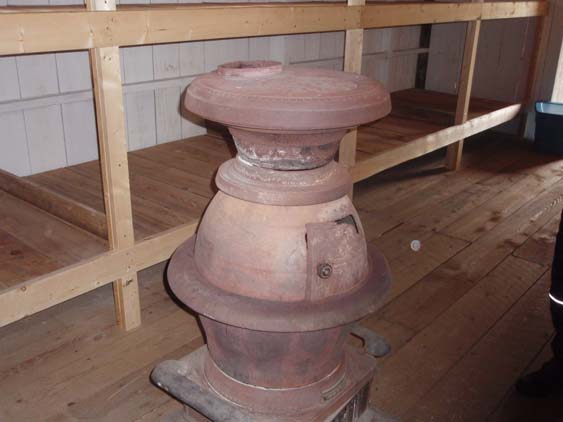 |
|
| |
They
have on display what the prisoners would have been usually wearing while
they were here. |
|
| |
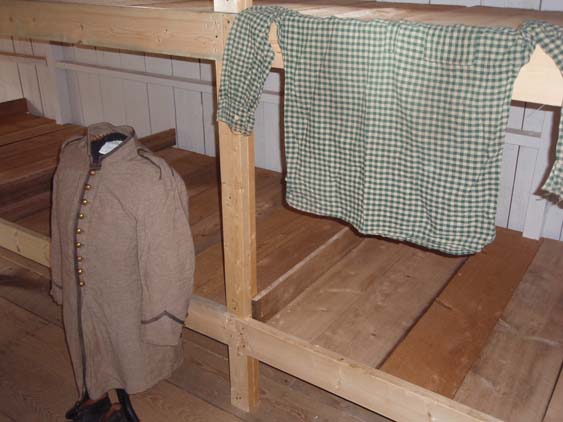 |
|
| |
And for the many that did not
survive, they have a sample of the old pine box that would be buried in
and hauled to a nearby cemetery. There is an very interesting story about
the Confederate burials from the camp -
The bodies of the deceased
were prepared for burial at the camp and transferred to Woodlawn Cemetery
approximately 1.5 miles north of the camp site. The coffins would then
have a jar containing the name of the person and any information he was
willing to share placed inside, and then be laid to rest side by side
in a long burial trench. Wooden grave markers were erected in the pattern
of soldiers lining up for inspection.
The man who was put in
charge of overseeing the burials was John W. Jones, the local sexton and
an ex-slave. Jones was respectable in his duties and kept such precise
records that only 7 out of the nearly 3,000 men buried there are unknown.
He carefully cataloged and stored any valuables that were in possession
of the prisoners at the time of their death, and later shipped them to
their families. After the war, several men were exhumed and transferred
home, but most families chose not to have their loved ones moved due to
the honorable way in which they were buried.
|
|
| |
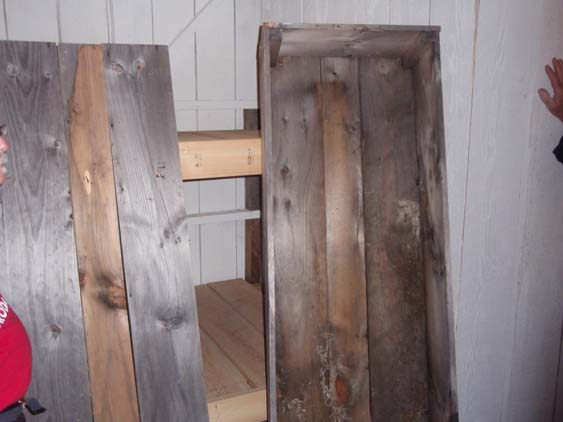 |
|
| |
We do notice a 'surprise'
visitor lurking in a corner of the barracks. I'm sure if the prisoners saw
this, it would have ended up on somebody's supper plate before it was over. |
|
| |
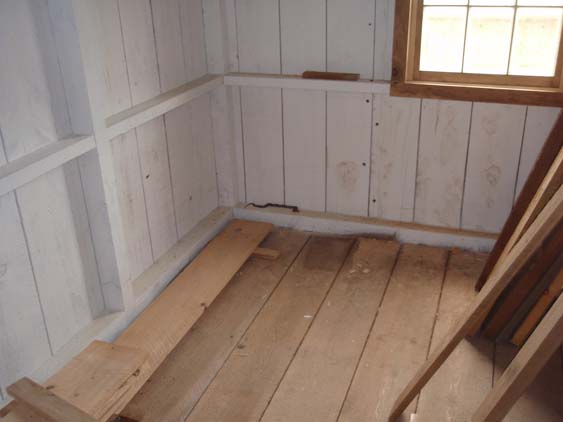 |
|
| |
From the reconstructed
guard tower, you can down toward Foster's Pond which became an open sewer
due to the overcrowding and lack of sanitary facilities. Since those days,
a flood wall has been built to help control the rise of the Chemung River
- which actually flooded the prison camp during it's occupation. |
|
| |
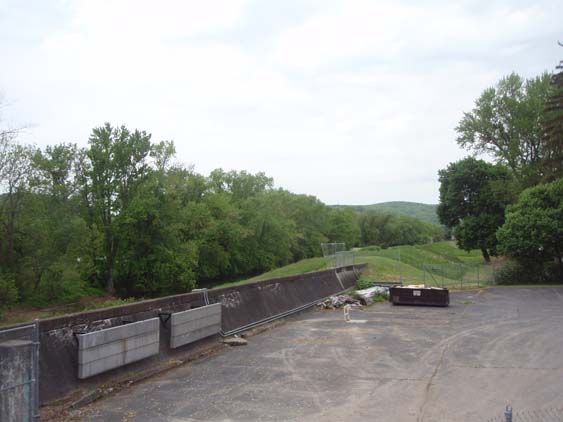 |
|
| |
They have also set
up a sweet memorial garden with plants representing each state that had
prisoners here. |
|
| |
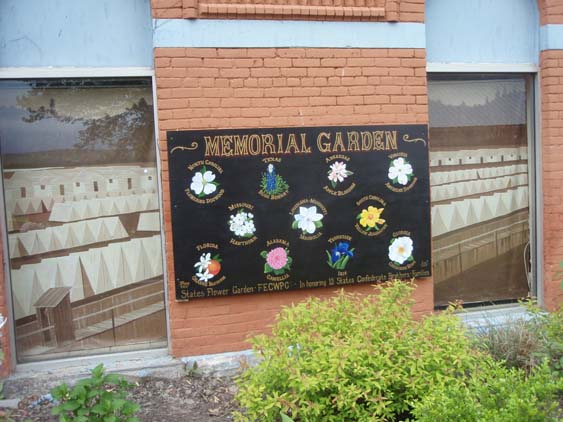 |
|
| |
Before all of this
was done, the only evidences that anything had gone on here were three small
stone markers (one since has been moved to the Historical Society Museum). |
|
| |
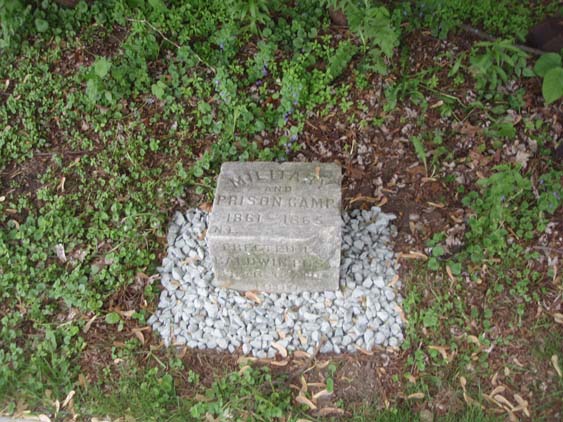 |
|
| |
If you did not know
where they were, you would be hard pressed to find them. Fortunately our
hosts know exactly where they are and take us right to them. |
|
| |
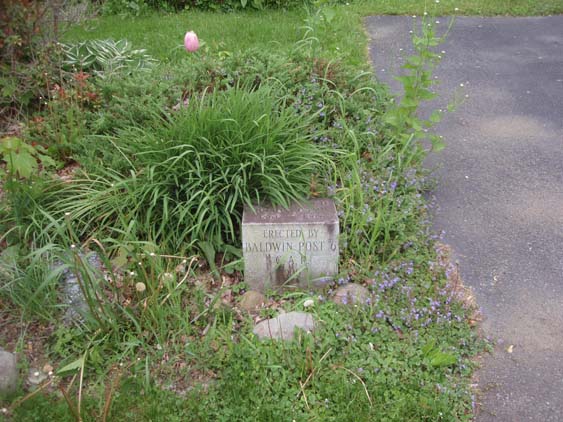 |
|
| |
There was also this
small metal marker put up about the whole affair by the local historical
society. One of the interesting facts was that local 'entrepreneurs' built
tall towers and charged the locals a small fee to climb up and observe those
nasty Confederates. They even sold refreshments to the observers while the
men inside the prison bargained for rats and such to eat. |
|
| |
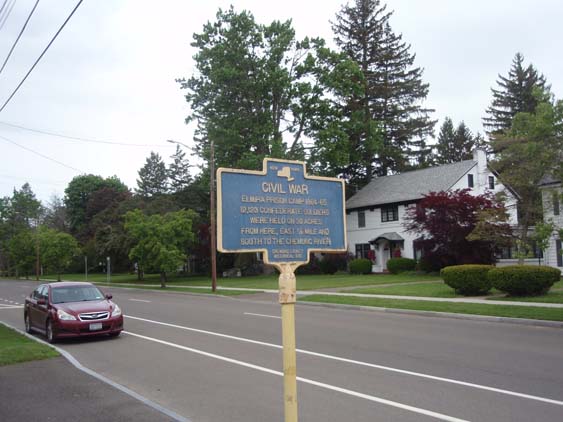 |
|
| |
The original farm house of
the person who leased the land for the prison is still standing. And in
one of it's rooms, the Friends are setting up a Civil War research library
for all to use. It is sad that for many years this whole affair was quietly
swept under the rug. In fact, right after the war this is the story -
Though the conditions
were brutal, they were common in prisons of both the North and the South.
Historians still debate on whether that was due to poor management and
inadequate supplies, as a means of retaliation, or both. Nevertheless,
newspapers in the North attempted to downplay the conditions of the camp.
The New York Herald denied any mistreatment of prisoners in Elmira, calling
the reports a "pure fabrication." To the Herald, all rations
at Elmira were sufficient and though it admitted the unusually high incidence
of illness in the camp, the newspaper said that the sickness was "beyond
the control of the authorities... there is no lack of medical attendance
or supplies." The propaganda was so powerful that the belief that
the Elmira prison camp was a humane alternative to Andersonville still
prevailed in some circles of thought years later.
In a meeting in 1892,
John T. Davidson, a captain of the guard detail at the prison, blamed
the high mortality rate on the changing weather, water, and manner of
living. He also conceded that the horrors of prison-camp life were numerous
and a condition that all men should hope to avoid. However, he said, "none
of these things can apply, with a shadow of truth, to the prison camp
at Elmira."
However, by the end of
the war, it could not be disputed that Elmira had taken a considerable
toll on the prisoners who came through its doors, with its mortality rate
(24.5%) being nearly that of Andersonville (28.7%).
What is amazing is that anyone
familiar with Civil War history knows about the Southern POW Camp Andersonville
but very few have ever heard of Elmira. There is a national historical
site to preserve Andersonville. In fact, the Confederate officer in charge,
Captain Henry Wirz, was the first person to be tried and executed as war
crimes criminal. But here was a camp with a very similar death rate as
Andersonville, and it gets swept under the historical rug until now. I
guess the moral of the story is, if you win the war, you get to write
the history.
|
|
| |
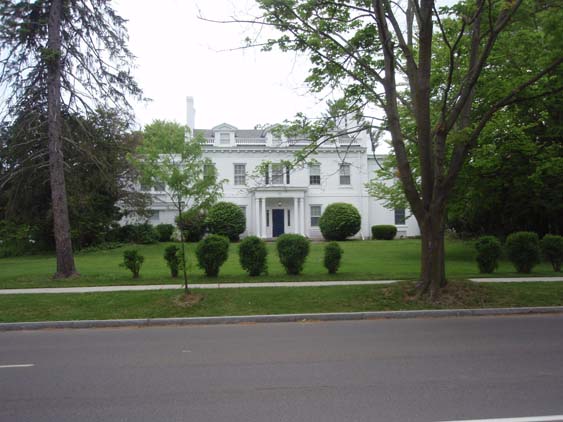 |
|
| |
Our hosts take us
for a return walk that would have been right in the middle of the camp.
Of course after the war, the buildings were removed and the land returned
to farmland and now residential housing. But no doubt JKP would have been
somewhere in this area as a prisoner in the camp. |
|
| |
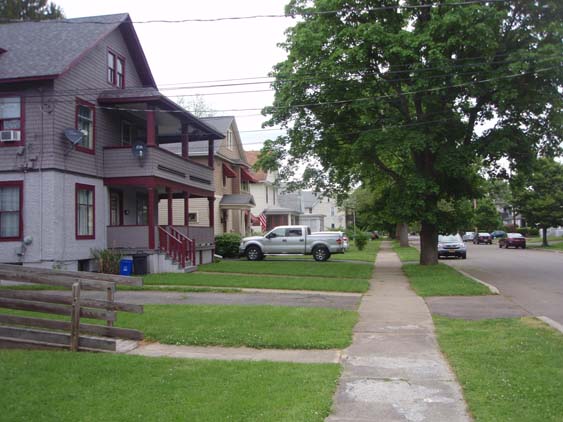 |
|
| |
There are many lovely
homes located in the 'camp area', very stately and ornate compared to the
shambles that the prisoners lived in many years ago on the same ground.
|
|
| |
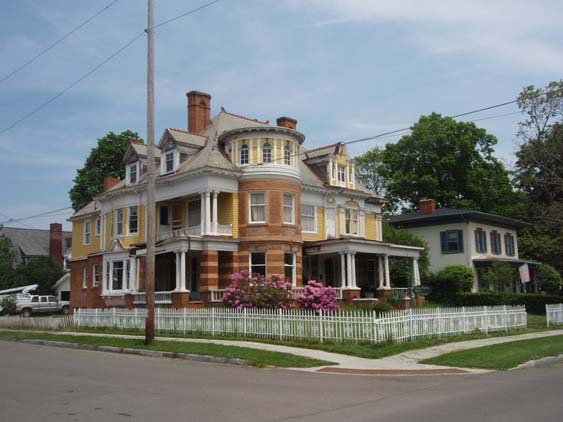 |
|
| |
Sissy and I decide to purchase
a memorial stone in honor of our great, great grandfather who
suffered here. To us, it is a great way to finish up what has been an
amazing walk through history. We thank Doug and Terri for taking all their
time to guide us around and share the camp's history and their personal
efforts to create a living museum for an important part of our nation's
history.
As we leave, I take a shot
looking down the river where the camp was located.
|
|
| |
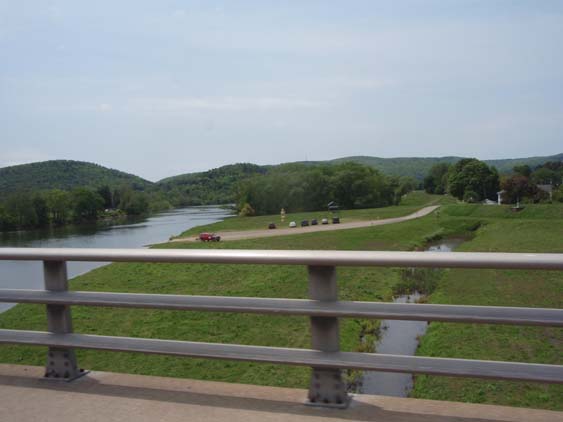 |
|
| |
Soon we are out of
New York and back into Pennsylvania. |
|
| |
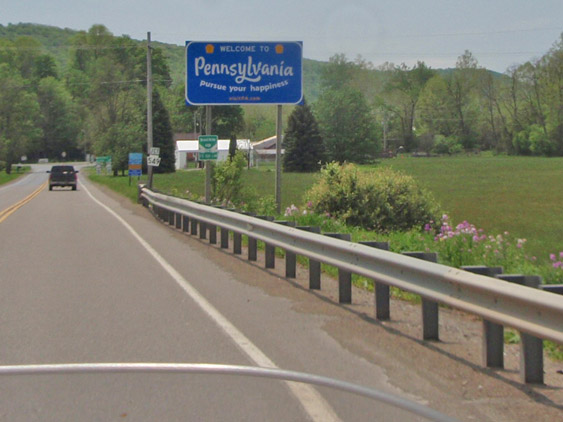 |
|
| |
We get to enjoy a
few good backroads before we have to get on the slab. |
|
| |
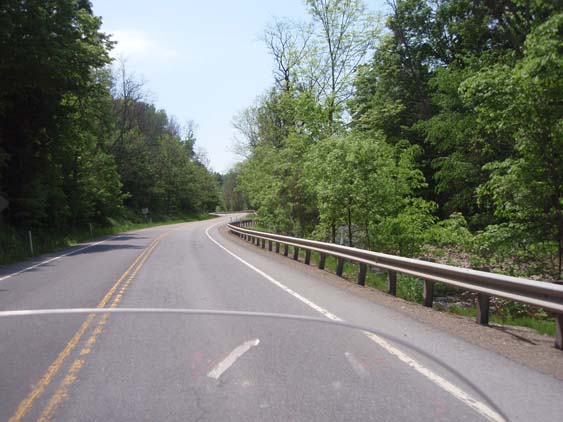 |
|
| |
Since all three of us grew
up in Lewisburg, Tennessee I have to get a shot of this sign of Lewisburg,
Pennsylvania. I remember I was passing through here years ago and sent
my momma a postcard from Lewisburg to Lewisburg -
"Just passing through
town and thought I would drop you a note."
|
|
| |
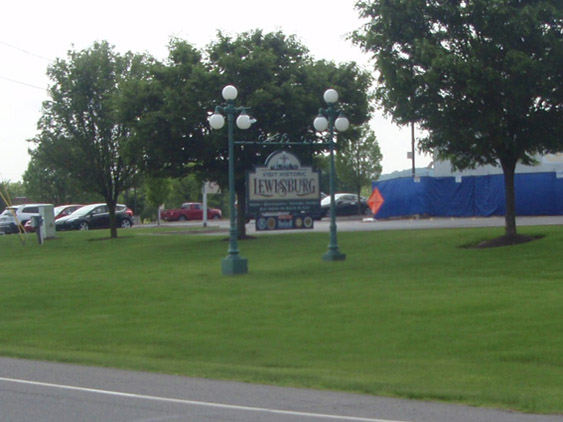 |
|
| |
As we make our way
to Carlisle, PA to our location for the evening, I notice lots of row houses
along the way. |
|
| |
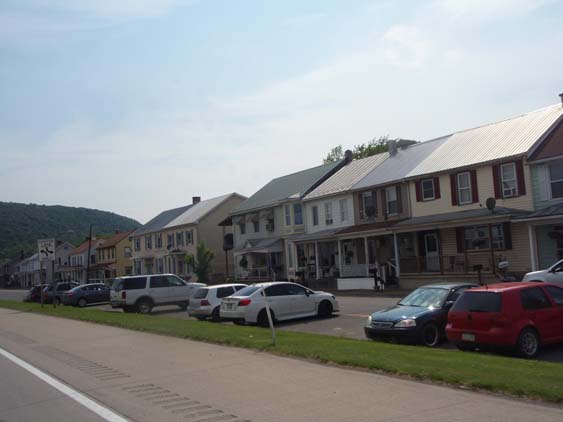 |
|
| |
I also remember this
interesting railroad bridge with it's many arches across the wide river. |
|
| |
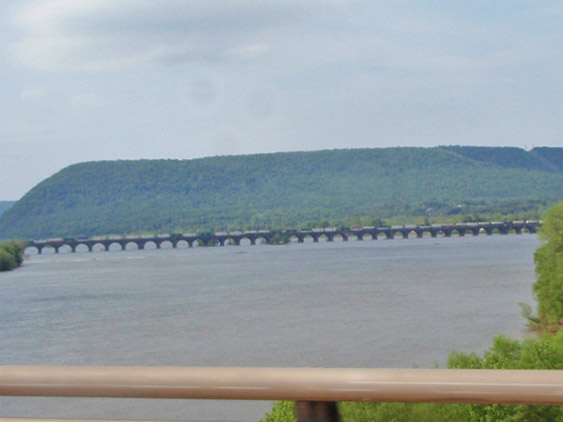 |
|
| |
I've stayed at this
Super 8 before, but what brings me back ... |
|
| |
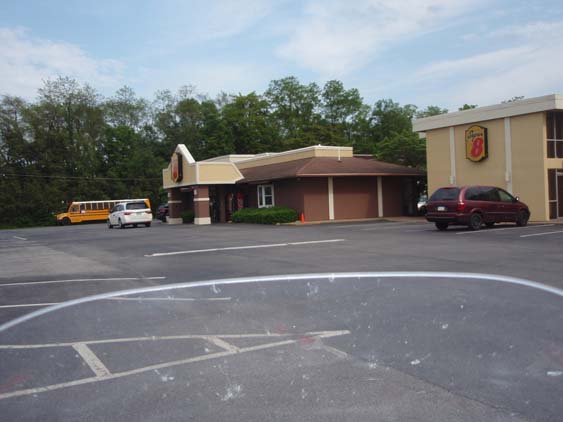 |
|
| |
is the wonderful
restaurant across the street - the Middlesex Diner. |
|
| |
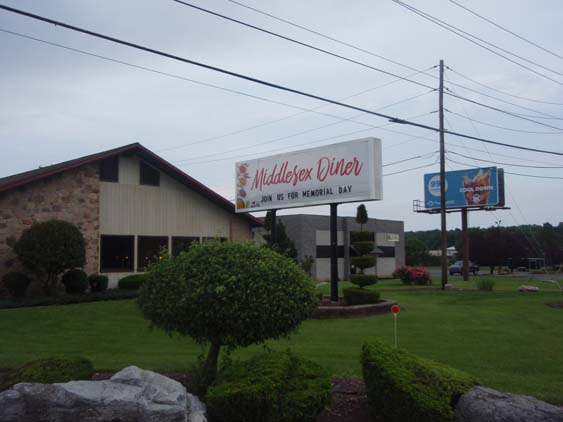 |
|
| |
They have a 'memorial'
tree in the front area which I think is a really neat idea since tomorrow
is Memorial Day. |
|
| |
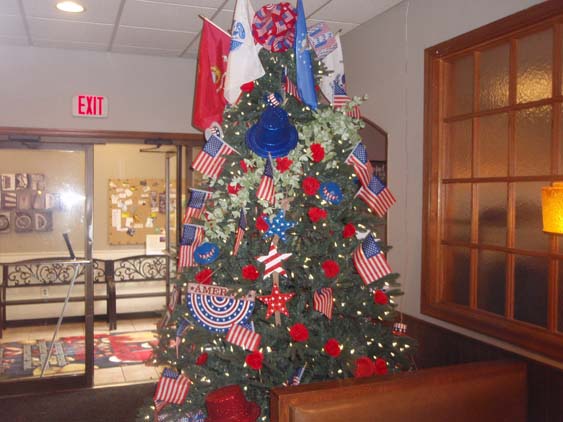 |
|
| |
I figure I'll go
big and order a ribeye steak. It comes with a nice salad and a lovely cup
of seafood chowder. |
|
| |
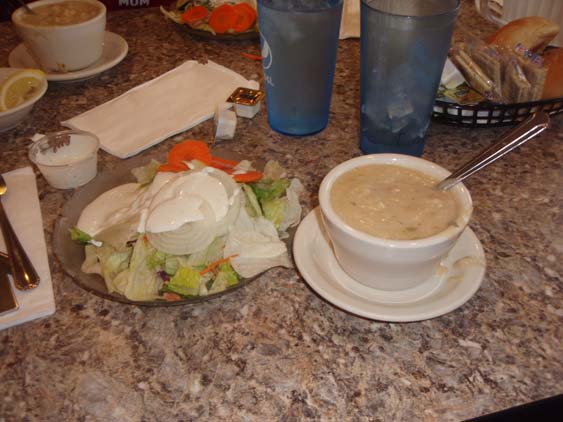 |
|
| |
The steak is as good
as I have gotten at any steakhouse. Sissy gets a prime rib and she says
it is one of the best that she has ever had. Andy gets a fish dish and it
is also excellent. |
|
| |
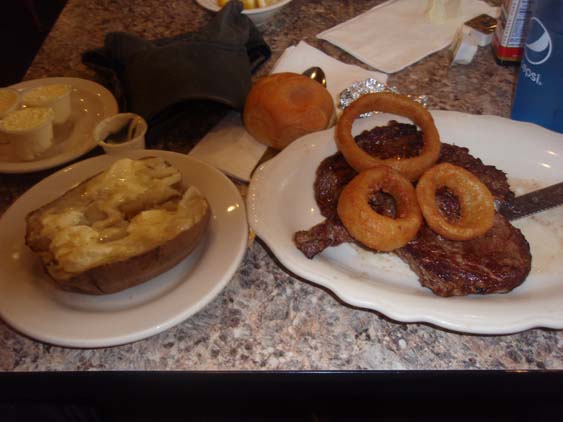 |
|
| |
And as usual, I leave
few fragments behind just like a plague of devouring locusts. |
|
| |
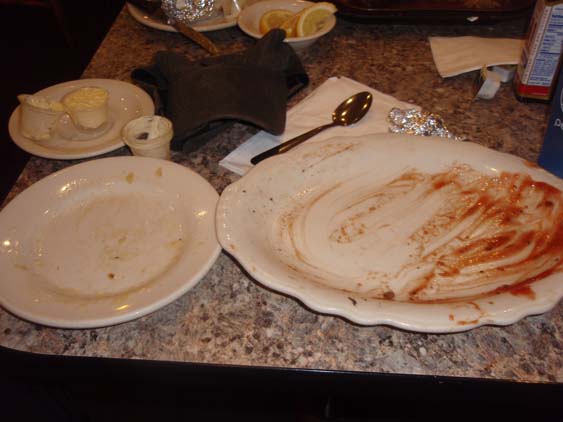 |
|
| |
Today, we have finished
the historical part of our trip. We all agree that the kind treatment of
our hosts at Elmira was just icing on the cake to the whole experience.
I had no idea what we would find at each location, but each location had
its own unique flavor and history to observe. Knowing that the next two
days are travel days, we all head back to our rooms. Tomorrow we plan on
attending church before we head out so I figure I'd best get some sleep.
When the lights go out, I follow in the same manner in short order. |
|
| |
|
|
| |
|
|
| |
|
|
| |
|
|
| |
|
|
| |
|
|
| |
|
|
| |
|
|
| |
|
|
| |
|
|
| |
|
|
| |
|
|
| |
|
|
| |
|
|
| |
|
|
| |
|
|
| |
|
|
| |
|
|
| |
|
|
| |
|
|
| |
|
|
| |
|
|
| |
|
|
| |
|
|
| |
|
|
| |
|
|
| |
|
|
| |
|
|
| |
|
|
| |
|
|
| |
|
|
| |
|
|
| |
|
|






















































